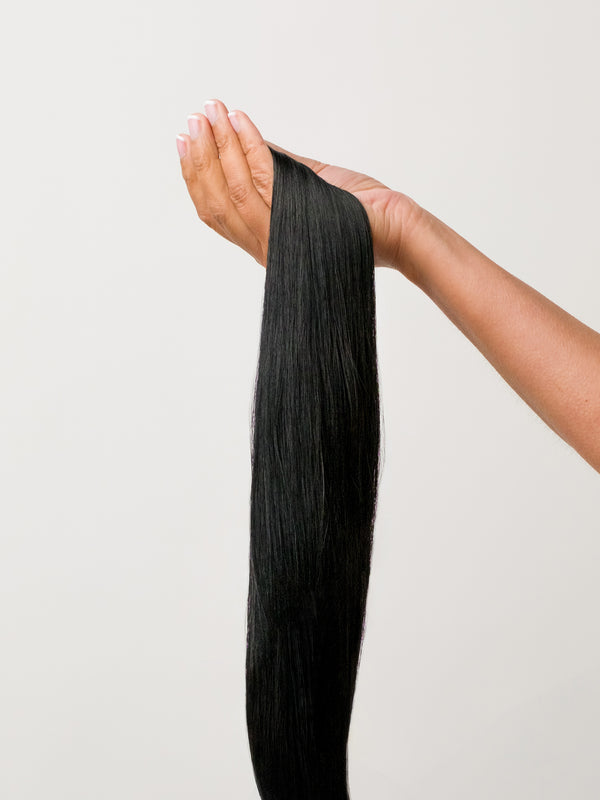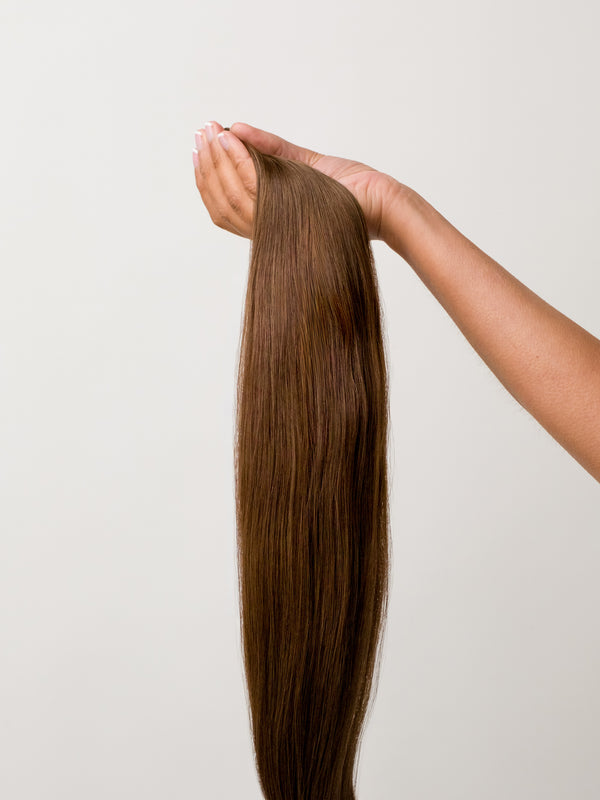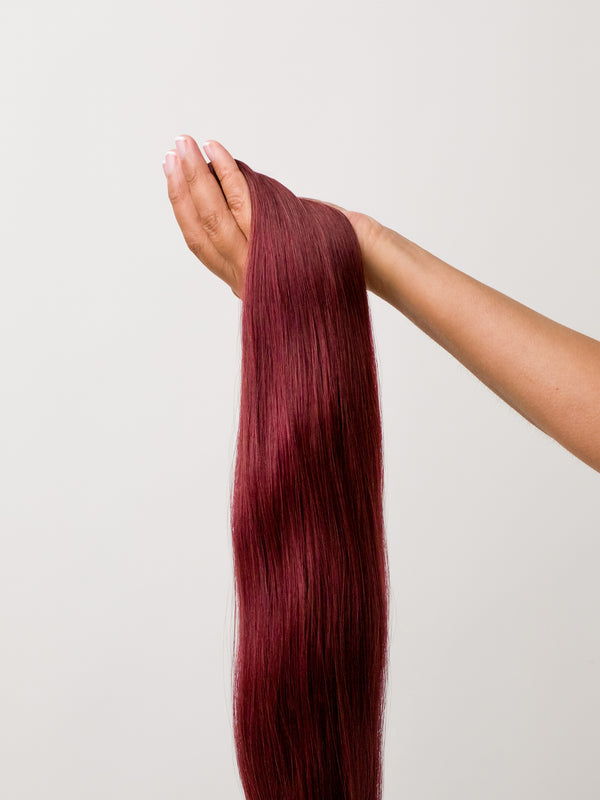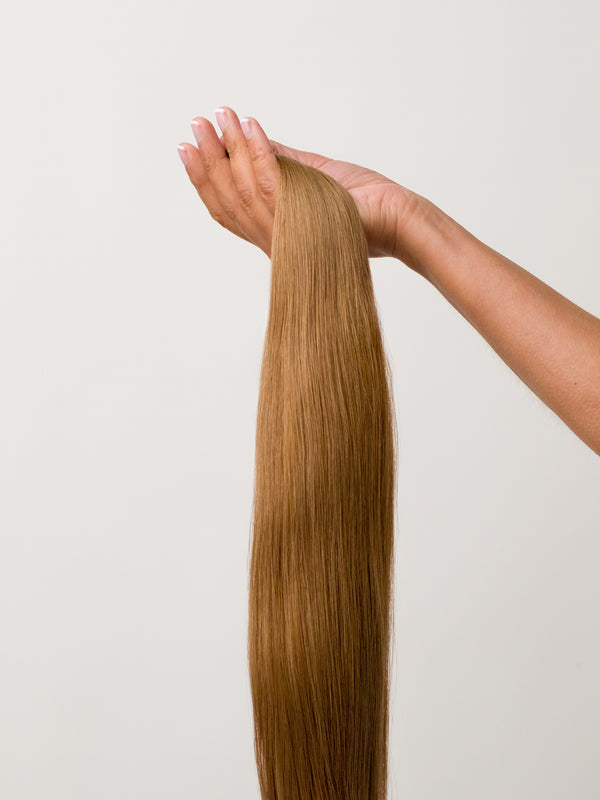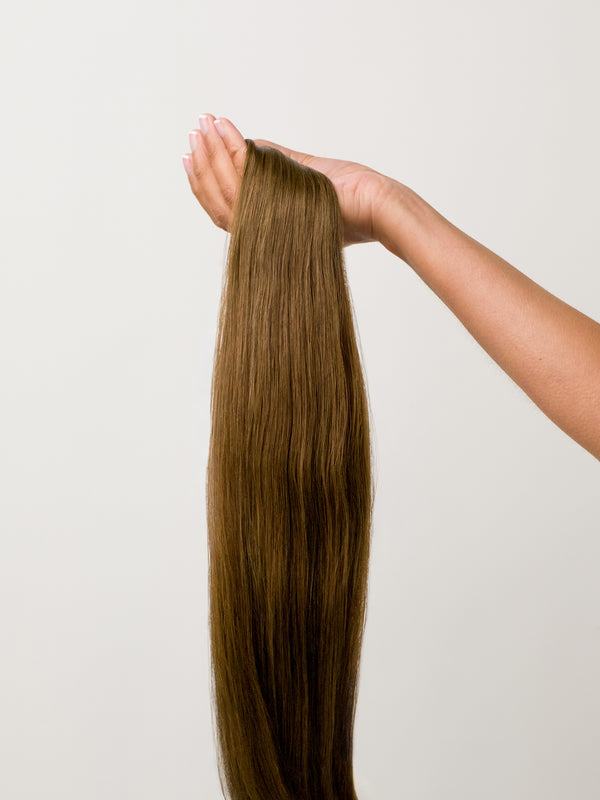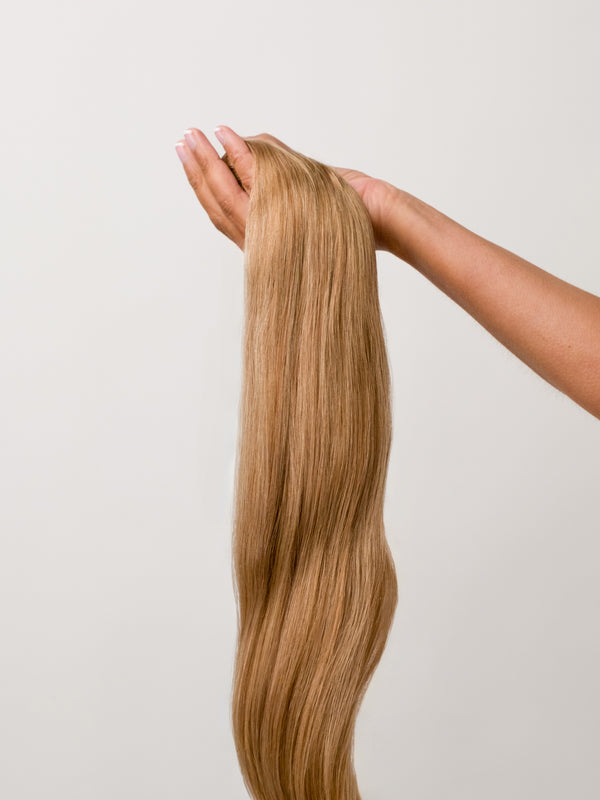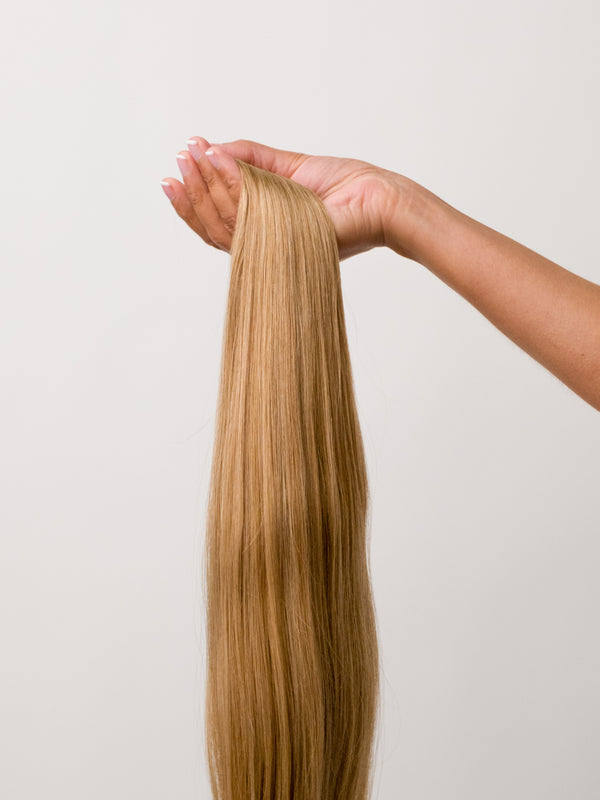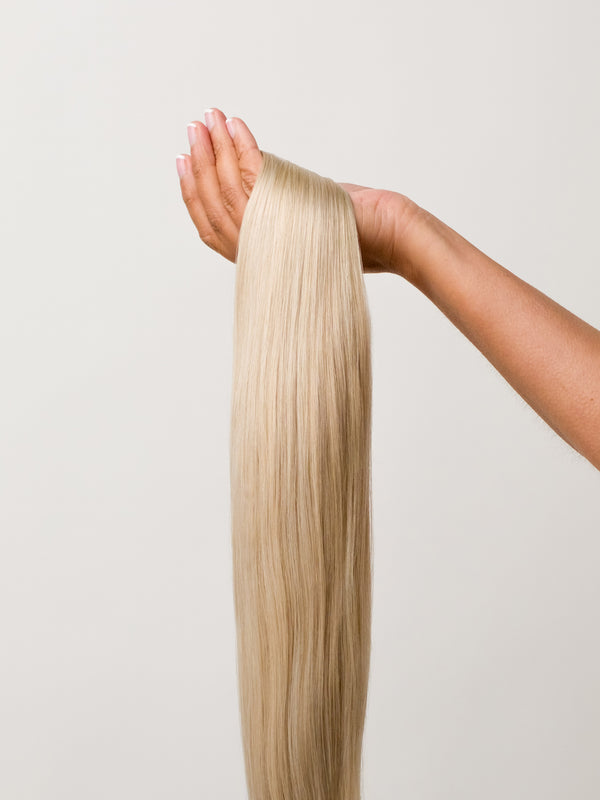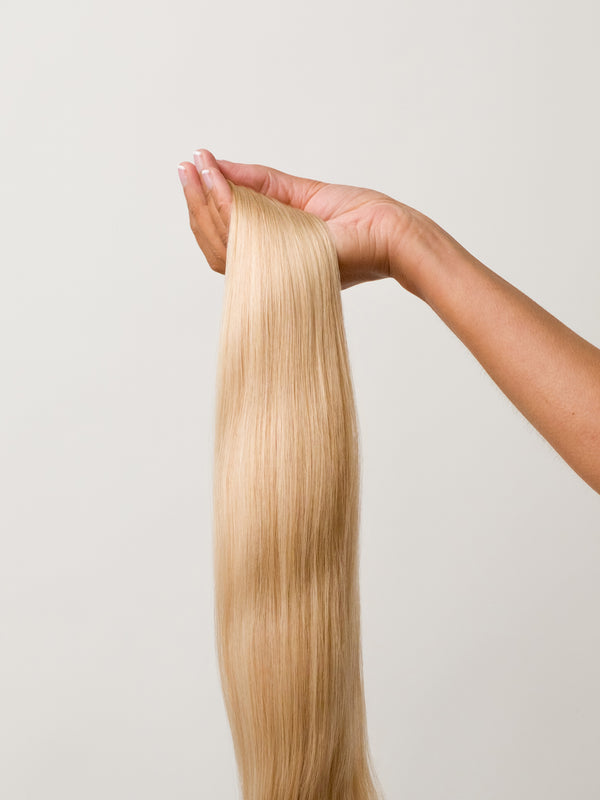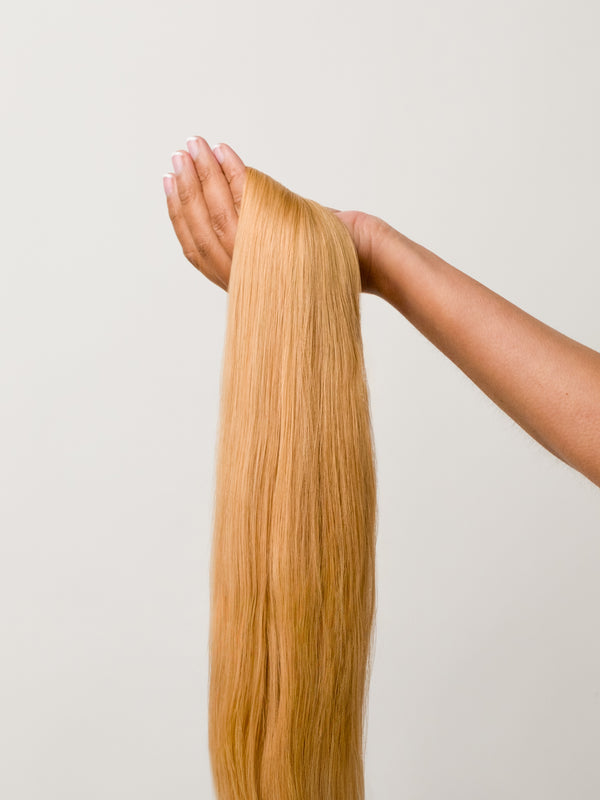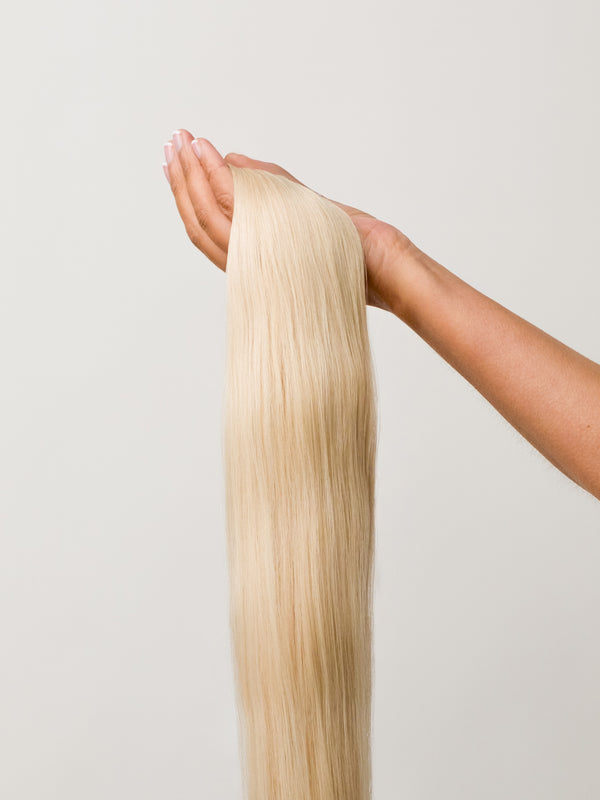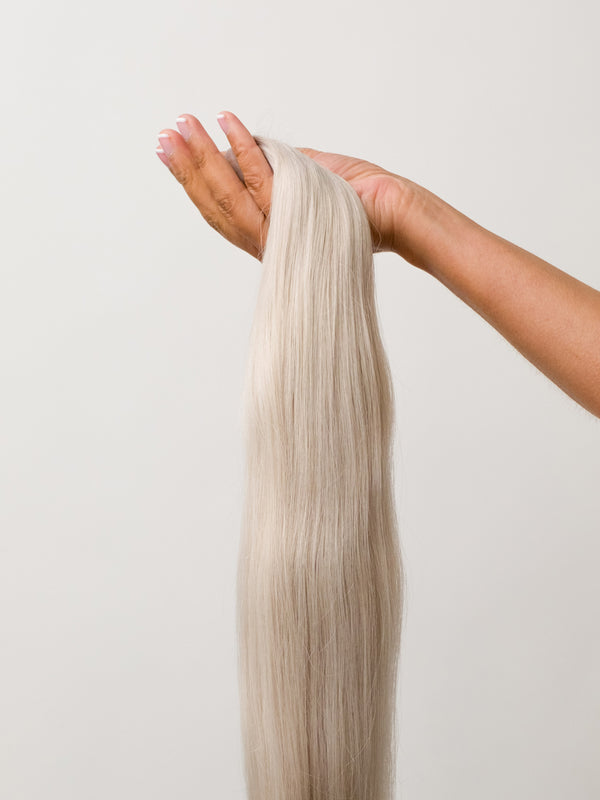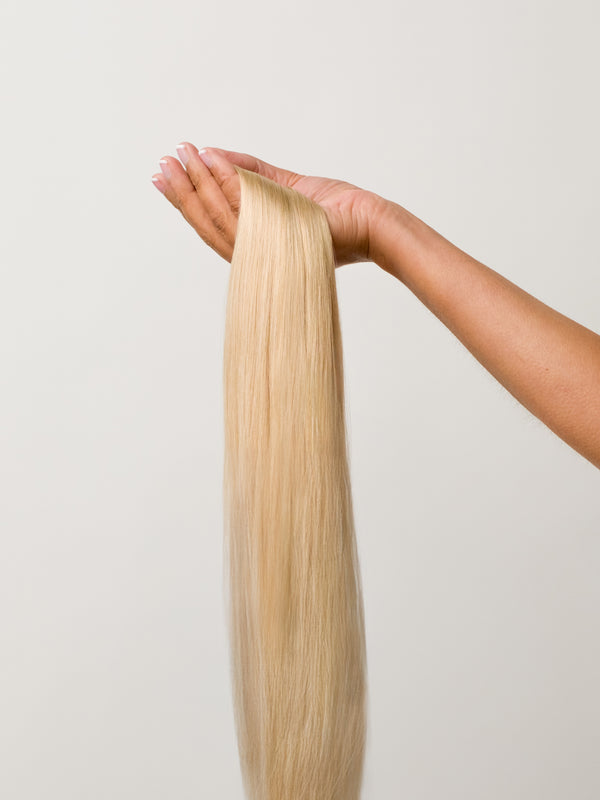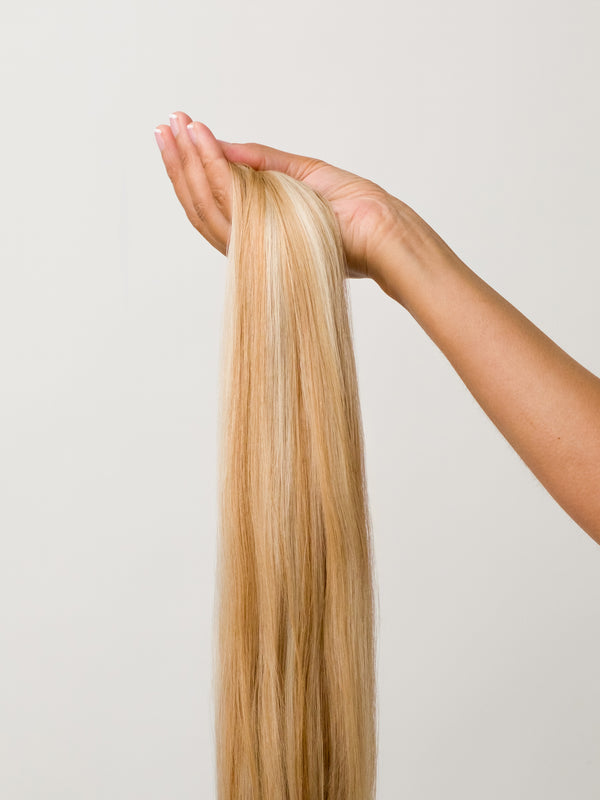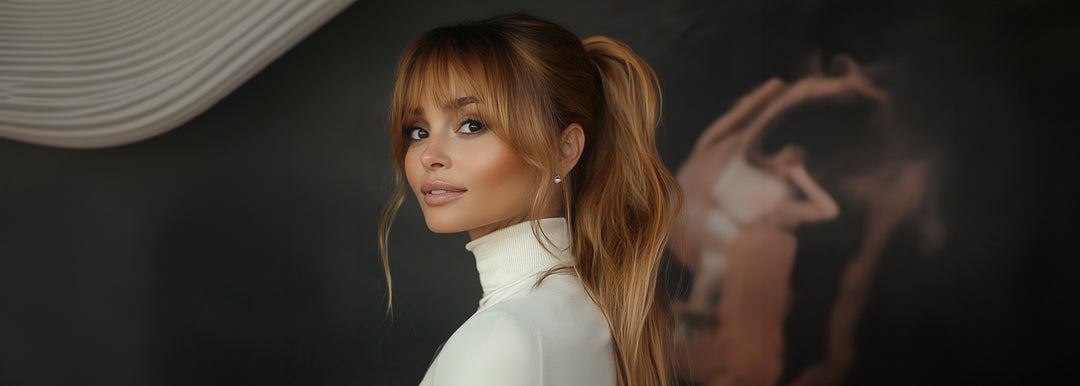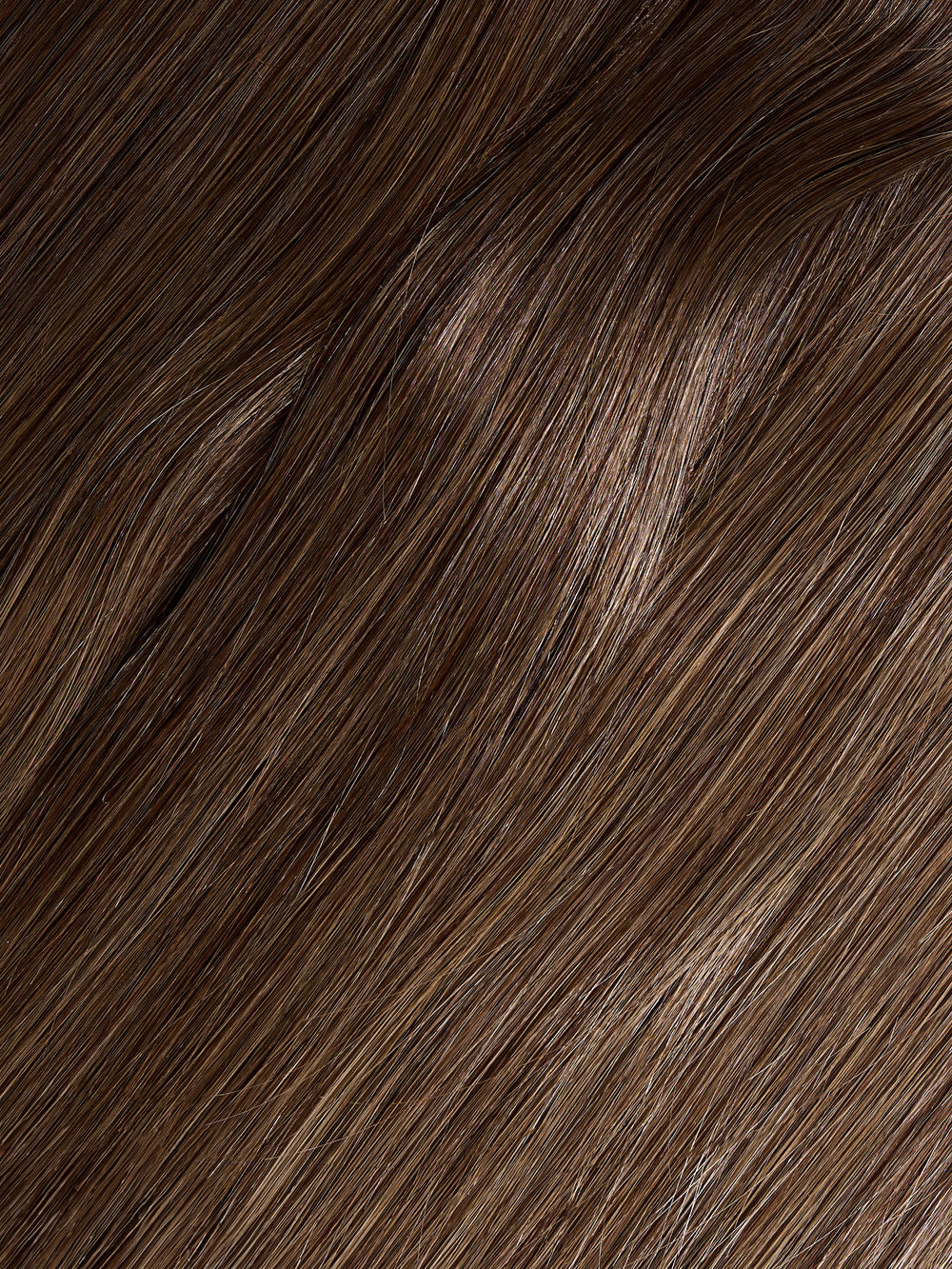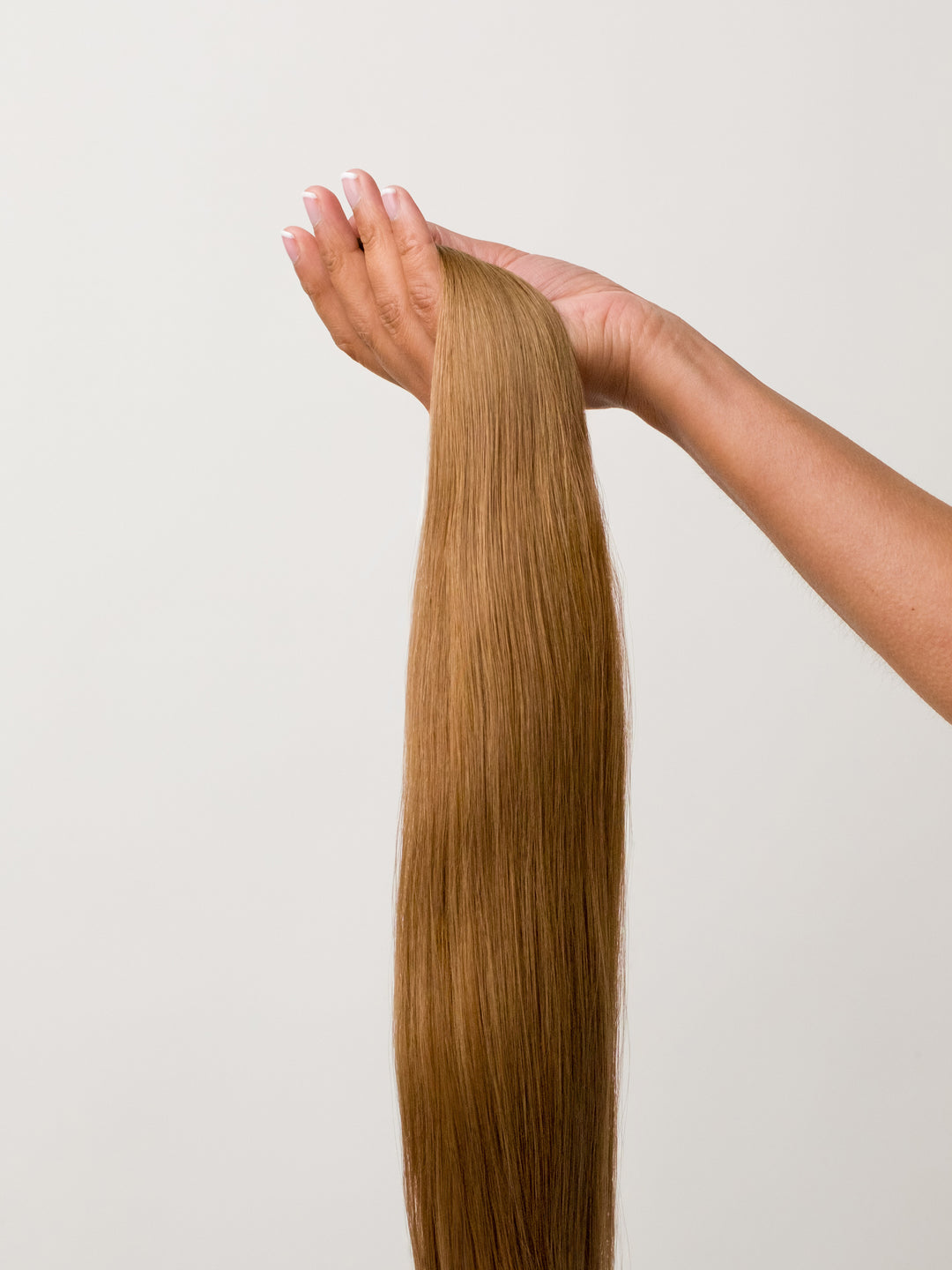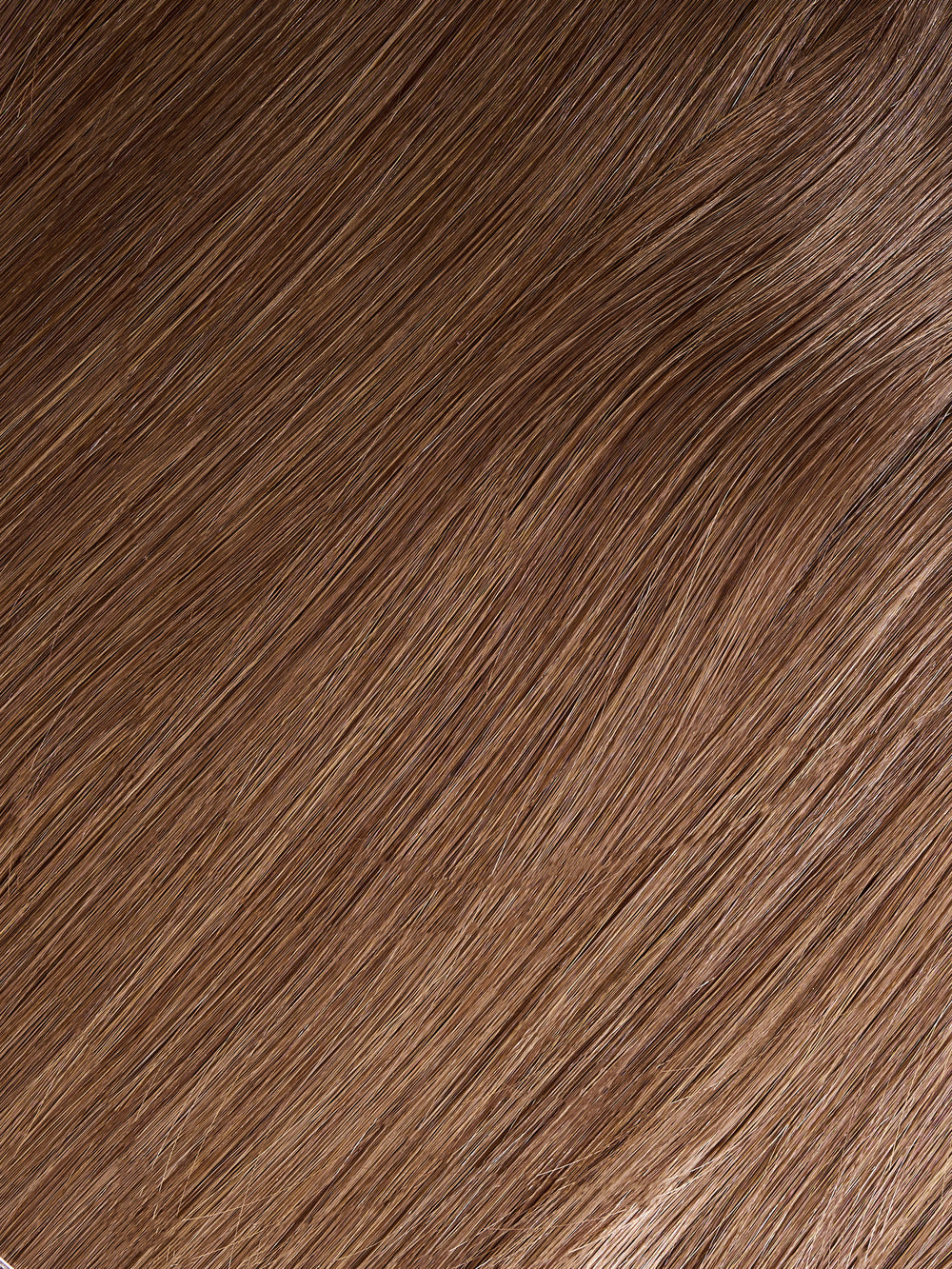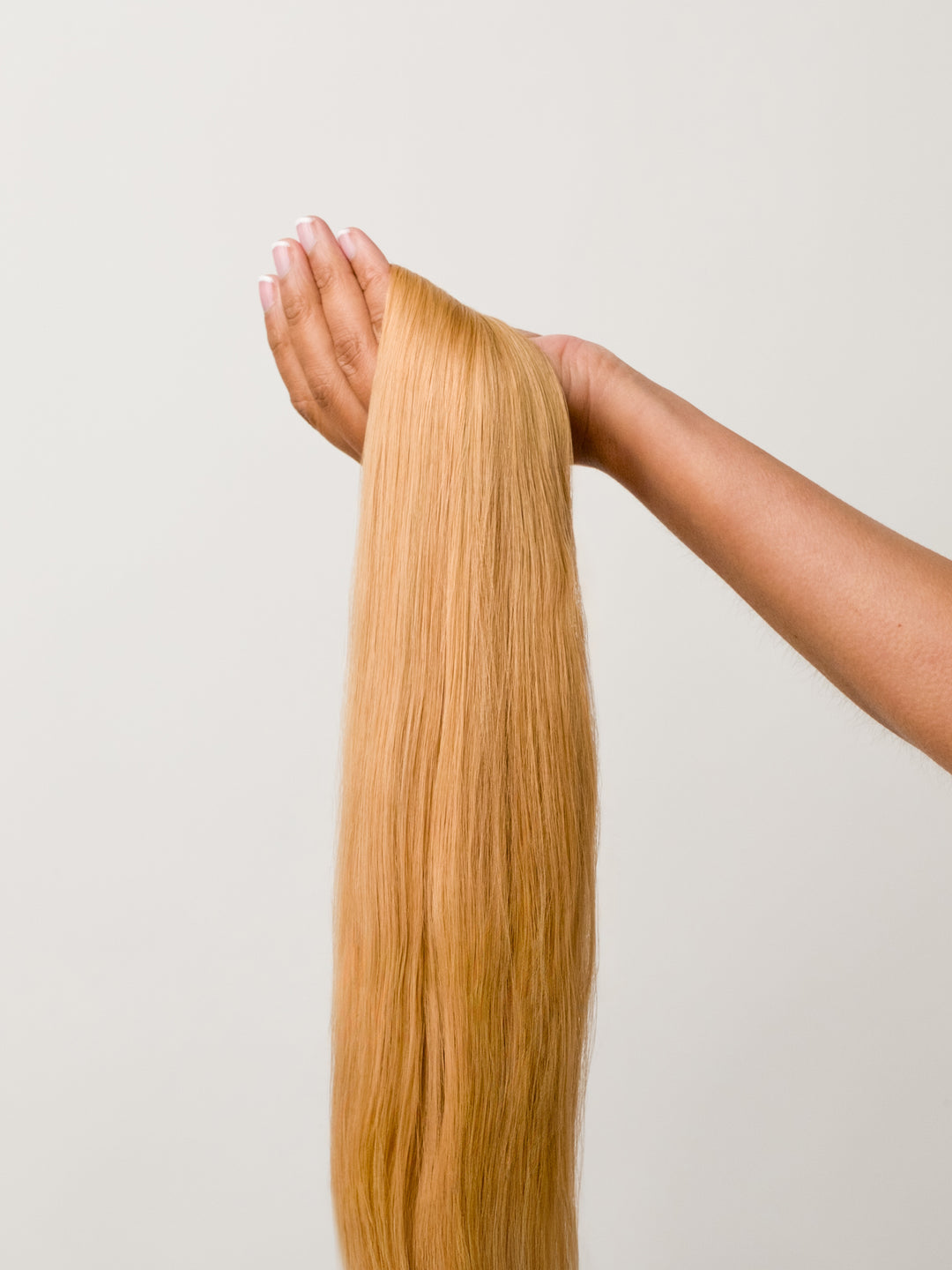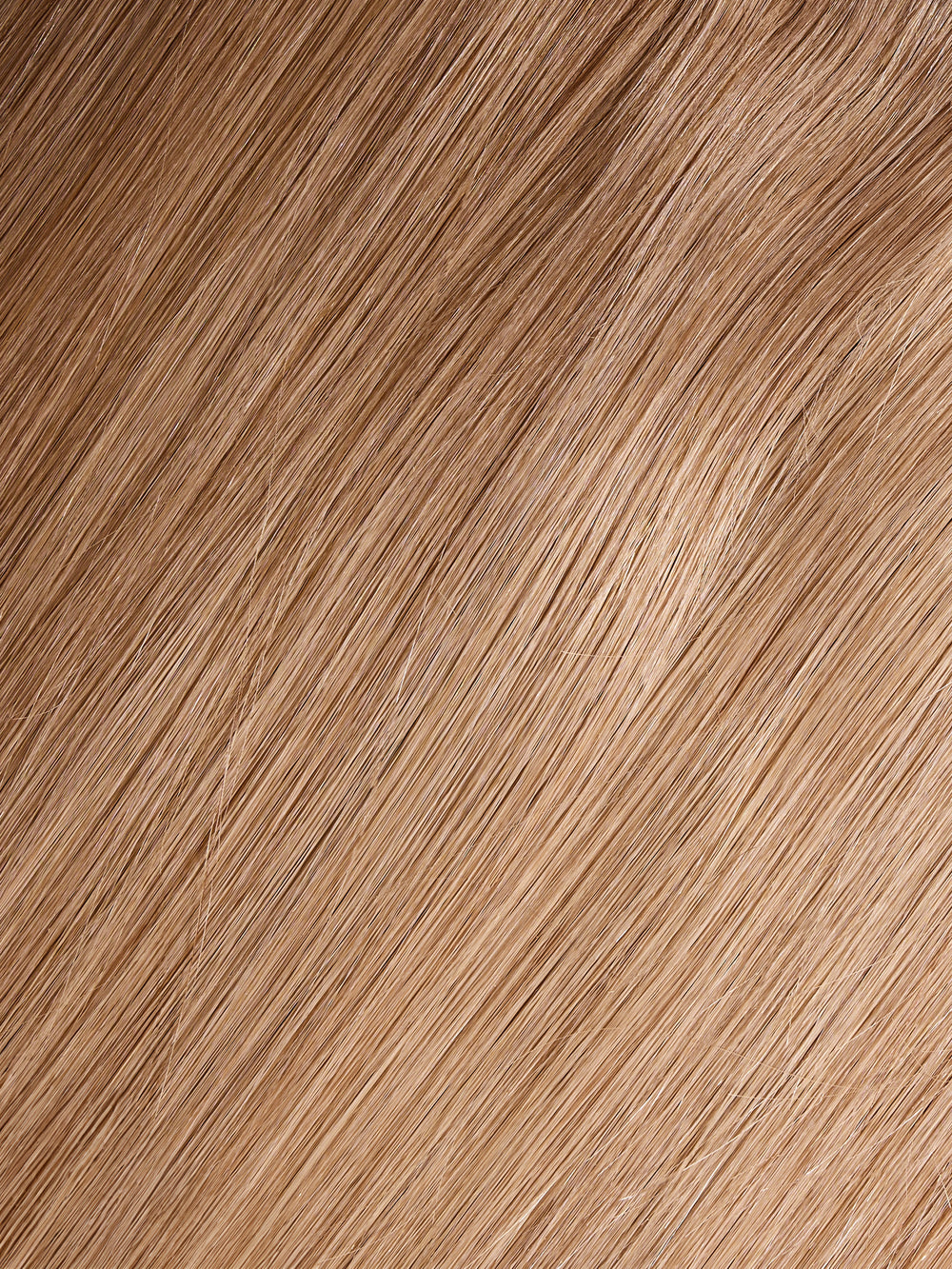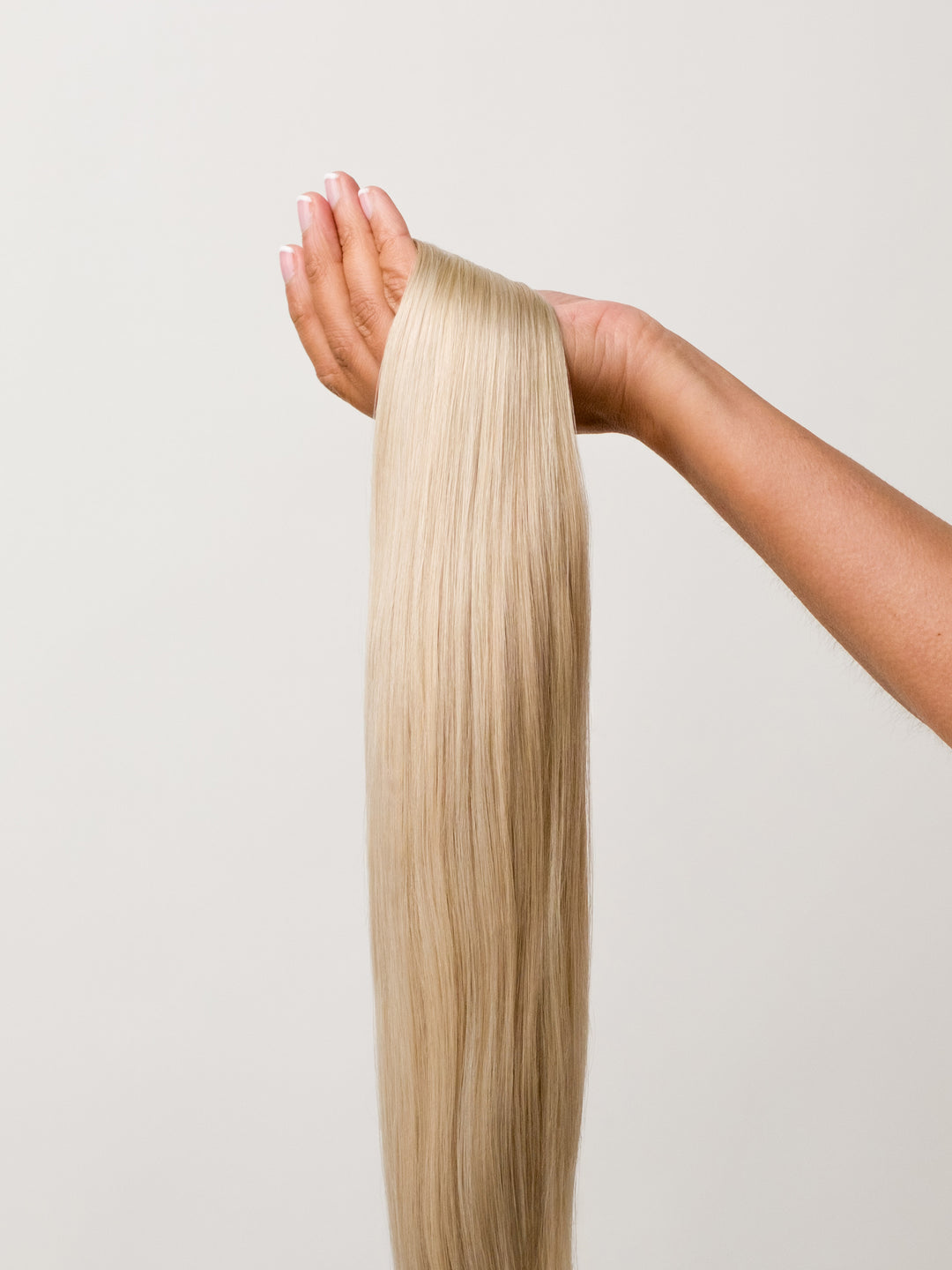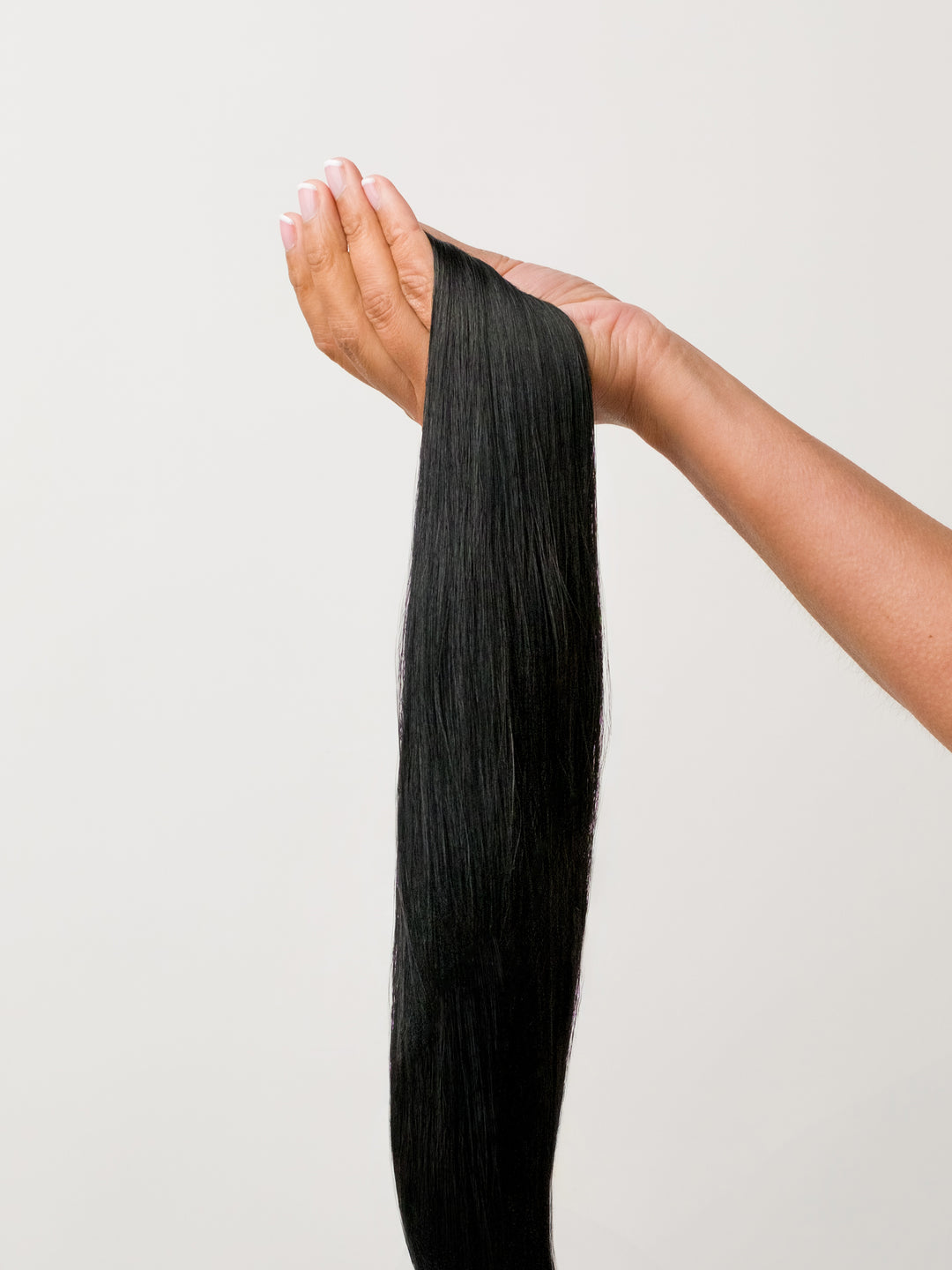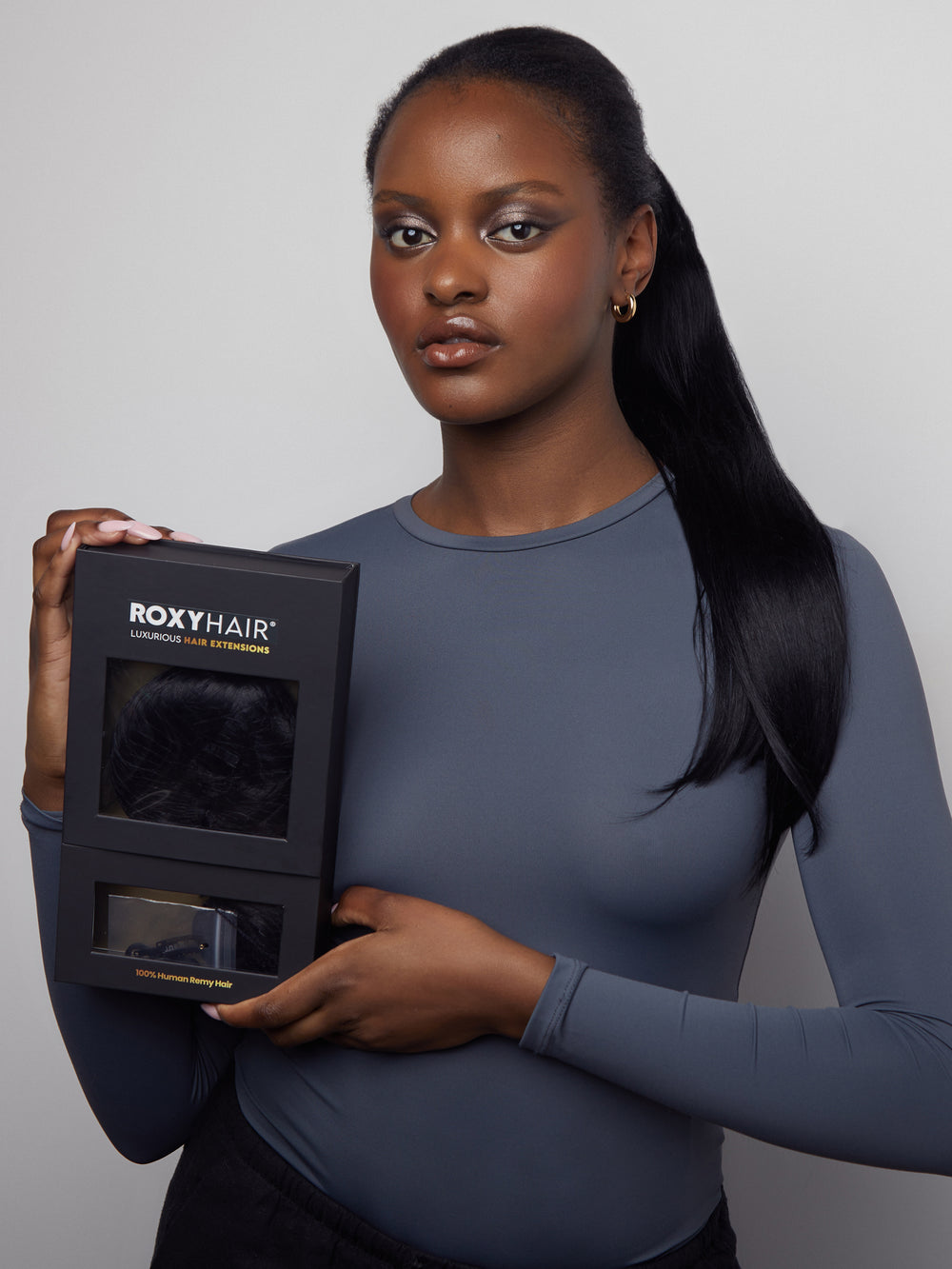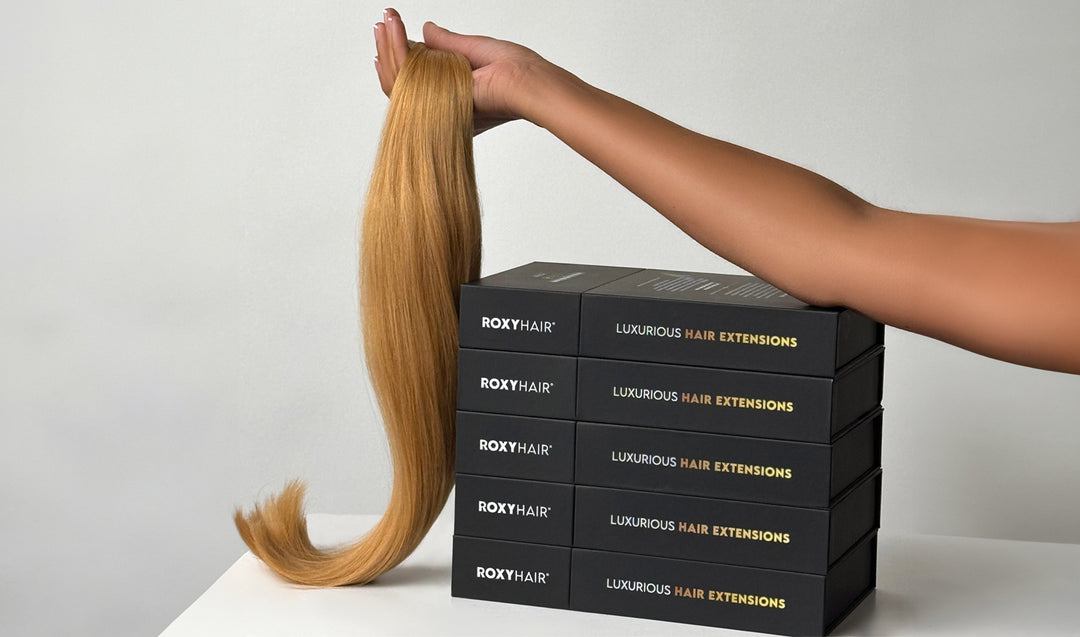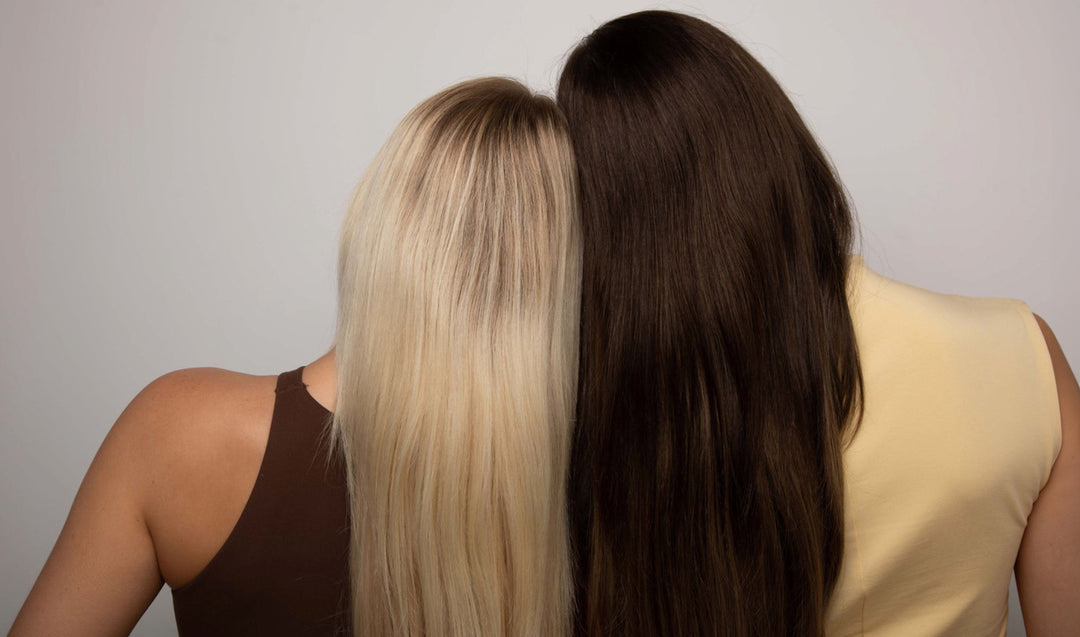If you're like us, you want your extensions to be looking as seamless as possible in your natural hair. But how often do hair extensions need to be moved up to make this happen? Well, the short answer is that it depends on the type of extensions you have, as different lengths, textures, and attachment styles all influence what your move-up time is. In fact, getting to know these things matter more than you might think, as proper upkeep is so important for the health of your hair and extensions alike. But hey, it's not all that complicated either! We've made this guide so you'll know the exact move-up schedules for different extension types, along with any factors that could cause you to adjust those timelines.
Key Takeaways
-
Yes, hair extensions need regular maintenance to minimize damage and tangling, but how often you'll need to move-up your extensions depends on the type of extension you have and your hair growth rate.
-
Clip-ins are the most low-maintenance types of extensions and fusion extensions require the most commitment, both in terms of care and cost.
-
Proper home care between professional appointments, including washing, conditioning, and styling, is the key to keeping your extensions healthy and giving them a long life.
Understanding Hair Extension Maintenance
No doubt about it, hair extensions are an amazing tool to enhance your natural hair as they add volume, length, and even a pop of color. But it does take a little work to look this good, and the key to this is consistent maintenance. After all, hair extensions aren't just about looking incredible 😉; they also need to feel comfortable. Proper maintainance will do both of these jobs as it will keep your extensions in the correct position, in turn reducing discomfort and preventing any strain on your natural hair - and even prevent further damage.
This is because when you keep on top of any needed upkeep, you'll be minimising the risk of damage to your natural hair thanks to less tension, tangling, and stress on your hair and scalp. That being said, you should also go in for regular check-ups and touch-ups with your local hair salon so that you can make sure that both your extensions and your natural locks are not compromised. While this might seem a lot, it's truly quite simple! Learning the correct practices will also go a long way in avoiding other issues like matting and tangling, which if left unchecked, can cause damage to your precious extensions.
Types of Hair Extensions
Luckily, there are tons of different extension varieties on the market that are made for many different needs and wants. These include:
-
Clip-ins
-
Tape-ins
-
Fusion extensions
-
Hand-tied extensions
Clip-in extensions are one of the most popular types for many people because they're versatile and easy to use. They're great because they allow you to switch up your look in minutes, which is perfect for those who love to experiment with their hair or want to glam up for special occasions.
Fusion extensions, known as keratin-bonded extensions, are another popular choice. These extensions are bonded to your hair using a keratin adhesive and can create a seamless blend with your natural hair.
Factors Affecting Maintenance Frequency
One thing you should know is that the maintenance schedule of your hair extensions significantly depends on the attachment method. For example, beaded row extensions (a specific type of hand-tied method) can be a lot gentler on the hair and tend to need less upkeep.
Other factors like your hair growth rate and your hair type also play a big role in your personalised maintenance schedule. For example, faster hair growth or thicker hair could mean more trips to the salon to keep your extensions blending seamlessly. This should be done even if you’re experiencing thinning hair.
Move-Up Schedules for Different Extension Methods

The move-up schedule is how often you'll need to go to maintenance appointments to refresh the position of your extensions as your natural hair grows. Keep in mind that there are some extensions like that need a move up schedule. For example, Roxy Hair clip-in extensions don't have a move-up schedule because they can be easily removed and reattached at any time.
On the other hand, tape-in extensions require a move-up every 6-8 weeks as that's when the adhesive tape starts to become visible, and fusion and hand-tied hair extensions typically need to be moved up and potentially replaced every 3-4 months.
Clip-In Extensions
Clip-in hair extensions are the perfect option if you don't want to commit to wearing extensions on a daily basis. They are attached using small pressure-sensitive clips and are great for special occasions or changing up your look whenever you want. And because clip-ins are meant for temporary wear they don't need to be moved up like permanent extensions do, making them an excellent choice for first time extension users.
However, like all hair extensions, clip-ins come with a price tag. These extensions generally cost around $300, last between 6 to 12 months, and may have additional costs for initial haircuts or if you need to treat any damage that's been caused by wearing the extensions. But for the flexibility and versatility they offer, many find clip-ins worth the investment. 💕
Shop Roxy Hair
Tape-In Extensions

Next up, let's take a look at tape-in hair extensions. These extensions are attached to your hair using a special kind of adhesive tape, where the slim, invisible tapes are known for creating a natural look that’s hard to detect. Keep in mind though, that as your hair grows the tape will become more visible and will need a move-up every 6-8 weeks to keep them looking their best. But unlike sewn in hair extensions, tape-in extensions are easier to adjust as your hair grows.
One of the noteworthy advantages of tape-in extensions is their life span. With proper care, tape-in hair extensions can last up to a year 🤩. The hair can often be reused two to three times as well, allowing for three to six months between complete hair replacements. People love tape-ins because they can not only reduce their haircare costs, but lessen the environmental impact too!
Fusion Extensions
Fusion extensions, also known as keratin-bonded extensions, make an amazing long-term solution if you're looking for a semi-permanent hair transformation. This is because these extensions are attached to your hair using a keratin adhesive, which creates a durable bond that can last up to four months before a move-up or replacement is needed. 😍
Fusion extensions also give a natural look and are designed for long-term wear with as little maintenance as possible needed. Keep in mind, though, that installing fusions can mean a significant investment, which we've outlined below:
-
Hair cost: ranging from $400-$1,100 for the hair alone
-
Salon installation costs: around $550
-
Move-up sessions: usually cost about $450 every three months
Despite the higher cost, people love them and fusion extensions have a loyal fan base thanks to their longevity and natural appearance.
Hand-Tied Extensions
Hand-tied extensions work well if you're looking to add tons of volume to your hair. Typically, these extensions need some upkeep every 6-8 weeks and trust us, you'll notice it if you miss it. 😳 Natural beaded rows hand-tied extensions also require salon visits every 6-8 weeks for lifting and retying. This being said, certain methods within the hand-tied category, such as Invisible Bead Extensions (IBE), can last up to 10 weeks with your stylist's approval, leaving a bit more breathing room if you want to stretch out the time between move-ups.
While hair extensions can literally be life changing, regular move-ups are a necessary commitment to preventing discomfort and keep things looking good as your natural hair grows. While the 6-8 week upkeep period is standard, keep in mind that it can also be influenced by specific factors like the installation method, how fast your hair grows, and your natural hair density.
Signs It's Time to Move Up Your Extensions
So how do you know when it’s time to move up your extensions? A clear sign is when your natural hair has grown about 1 to 1.5 inches from the roots and shows a visible extension displacement (a.k.a your extensions are too far down from your roots). Another sign could be if you're uncomfortable and are experiencing issues like itching, tugging, or tension in the scalp. Excessive tangling and matting at the roots, or if your extensions are slipping more easily, could also be an indicator that it’s time for a move-up appointment.
If there hasn't been alot of time since your extensions were installed, then it could signal that your hand-tied extensions need adjustment or weren't installed properly. Ultimately, regular maintenance appointments will keep your extensions looking fresh and natural, but make sure to check your hair extensions in between your salon visits to catch anything that seems off.
Caring for Your Extensions Between Move-Up Appointments
Keeping your extensions looking good is not only about regular move-up appointments, but also about how you care for them in-between visits. Proper care of hair extensions, including gentle washing and conditioning, will prevents damage to natural hair. Using safe shampoos and conditioners specially formulated for extensions is also crucial for their longevity and maintaining quality and a step we don't recommend skipping.
If you need to detangle your hair extensions, make sure to do this gently. Brushing them regularly also helps prevent breakage and keep them looking good for longer. And we also recommend using low heat during styling and using heat protectant products as this will protect both your hair extensions and your natural hair from heat damage.
Washing and Conditioning
When washing your extensions, it’s important to follow these steps:
-
Use a shampoo specifically designed for extensions.
-
Gently apply the shampoo from mid-length to ends.
-
Condition the same areas while avoiding the roots.
-
Avoid over-washing to prevent drying out your extensions. We recommend washing them once or twice a week.
-
Use dry shampoo as needed so that you can reduce the number of washes.
Hand-tied extensions also benefit from deep conditioning products once a week which keeps the scalp and hair moisturized. After washing your hair, start detangling extensions from the ends and work upwards using a brush or comb specially made for extensions, and take extra care when brushing wet hair to avoid damage.
Detangling Techniques

Using the correct tools for detangling is crucial for detangling hair extensions without causing damage. We recommend using a wide-tooth comb or a soft bristle brush, ideally without beads on the bristle ends to avoid snagging.
Remember to be gentle with your extensions, especially if you have thin hair, as too much scrubbing during washing can lead to matting and tangling. And always detangle your extensions gently to prevent unnecessary damage and prolong the life of your extensions.
Heat Styling Precautions
Heat styling is a great way to get results, but when it comes to hair extensions make sure that you keep a close eye on it! You should always use a heat protectant spray before using heat styling tools and only use low a medium heat. And when you blow-dry, allow your hair to dry almost completely before using a low heat setting to avoid heat damage.
For curled hair extensions, these should be made to last 2-3 days to reduce the need for frequent heat styling. And high heat should be avoided on tape-in extensions whenever possible as it can effect the adhesive tape.
Cost of Extension Maintenance
Professional maintenance appointments for hair extensions are usually less costly than the initial installation but are definitely an ongoing investment, where the average cost for a move-up or reinstallation appointment for hand-tied extensions is approximately $200 per row.
Environmental Impact and Reusing Extensions
It is possible to make ethical choices when choosing hair extensions. While synthetic hair extensions are probably not the best choice as they're made from plastics and add to long-term plastic pollution, there are sustainable options out there! For example, Roxy Hair uses ethically sourced hair from thoroughly-vetted partners and we don't compromise on quality, either as we only sell 100% human Remy hair of the highest quality. There are also that create sustainable hair extensions using biodegradable materials such as banana fibers and natural plant fibers, which are also hypoallergenic and free from harmful chemicals.
Reusing extensions is another way that you can significantly reduce waste (and save some coin while you're at it). Ultimately, choosing sustainable hair extensions and embracing healthy reuse practices can minimize environmental impact and support the shift towards more eco-friendly beauty routines.
Choosing the Right Extension Method for You
Choosing the right hair extensions for you does require you taking a look at your lifestyle, desired look, and budget as you'll want to make sure that the extensions you choose work well for your individual needs and preferences. The longevity and performance of hair extensions are also significantly affected by the material your extensions are made from, where human hair extensions tend to offer a longer lifespan and greater durability compared to synthetic options.
High-quality 100% pure Remy hair extensions, such as the ones we at Roxy Hair produce, are preferred for their ability to blend in with your natural hair and stay looking good throughout your regular hair care routines. There are also other hair extension methods to choose from, such as strand-by-strand (micro link, knotting) and wefted panels (tape-in, flip-in), each suitable for different hair textures and styling needs.
Hand-tied extensions are particularly well-suited if you have thick and/or coarse hair, and as they allow the use of oil-based products on the scalp. Glue-in extensions, on the other hand, are great if you're looking for a short-term hair enhancement, as they can give some pretty cool temporary style options and usually last a few days.
Summary
Hair extensions are the go-to way to enhance your natural hair, but they do require careful maintenance to keep you looking amazing. Before you decide on a style, it's worth it to look at the different types of extensions that could work for you, and what their maintenance schedules will look like. This will help you to become familiar with recognizing the signs when it’s time to move up your extensions and the time you'll have to commit to maintenance. So before taking the plunge, def think about what your lifestyle, desired look, budget, and hair type are so that you can choose the right extensions and method for you. And don’t forget the role that professional stylists have in maintaining your extensions! But no matter what extensions you choose, we're sure that with the right care and maintenance, your extensions will keep you looking fab for a long time to come. 🦊
Frequently Asked Questions
How often should I tip extensions be moved up?
You should have your extensions moved up every 8-12 weeks, as they will naturally move down as your own hair grows.
How can I tell if it's time to move up my extensions?
You can tell it's time to move up your extensions when you notice visible hair growth of about 1 to 1.5 inches from the roots, and discomfort like itching, tugging, or tension in the scalp. Increased tangling and matting at the roots is another sign that you should change, as your extensions will start to slip more easily.
How much does it cost to maintain hair extensions?
Maintaining hand-tied extensions typically costs around $200 per row for a move-up or reinstallation appointment. Prices may vary based on the type of extensions.
How can I choose the right extension method for me?
To choose the right extension method for you, think about your lifestyle, desired look, budget, and hair type. And if you want a second opinion, we suggest talking to a professional stylist to find the best fit for you.





